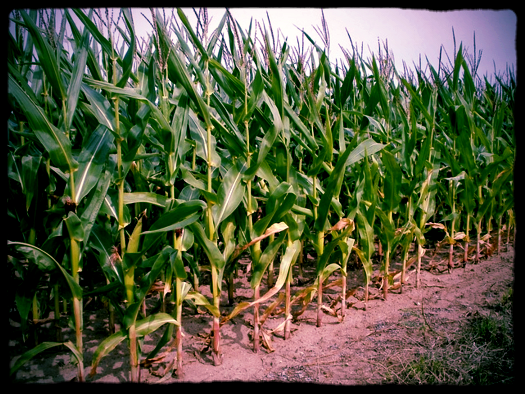Everything You Need to Know About Food Security and International Trade Part 1: the Basics on Trade Protection in Agriculture
Fall 2015 is an important time for trade, and not just because the Trans-Pacific Partnership (TPP) negotiations were successfully concluded a few weeks ago. Although TPP will clearly have wide-ranging implications, and is worth discussion, I want to draw attention to another set of upcoming trade talks. Diplomats will soon begin the World Trade Organization (WTO) Doha Development Agenda (Doha) Nairobi Ministerial, which may be the concluding round of talks since Doha was launched nearly fifteen years ago.
If you have been following previous Doha rounds, you will know that a stalemate has emerged, largely between two blocs: developed and developing countries. Last year there was a small victory when a boring but important Trade Facilitation Agreement was reached. However, this was overshadowed by a row between India and the U.S. on agriculture and the issue of food stockpiling in which India withheld its approval of the Trade Facilitation Agreement to gain leverage on the food stockpiling issue. Negotiators will take another crack at resolving the issues still on the table in Nairobi next month, in what is expected to be the last round of Doha talks.
Given the contentious role that food security and agricultural protectionism have played throughout the sagging Doha round, it is important to understand the debate about trade and food security more broadly. In this week’s two-part blog post I provide a thorough backgrounder on food security and trade. This first article provides foundational information on trade protection in agriculture. In the next article I will build on this foundation to explain the debate on food security and trade.
LEVELS AND TYPES OF TRADE PROTECTION IN AGRICULTURE
International trade is a complicated subject for a couple of reasons. First, the deals themselves are very dense. While there are a few general principles that are used in most trade agreements, much of the substance is usually product- or service-specific. In addition to that problem, there are dozens of different policy measures that governments use to restrict trade, some of which can be difficult to explain. Second, trade is a complicated subject because there are lots of overlapping trade deals out there. While the World Trade Organization (and its predecessor, the General Agreement on Tariffs and Trade) and associated trade agreements form the locus of the multilateral trade regime, international trade is a “spaghetti bowl” of smaller deals (bilateral, plurilateral, and regional trade agreements, investment treaties, and trade and investment agreements). There are something like 400 of these agreements currently in effect. As you can imagine, this makes the landscape of trade agreements very messy, even if you are a trade expert.
Even though trade agreements are complicated, the topic of agricultural protectionism is important enough that it is worth trying to wrap your head around the basics. In general, it is worth knowing (A) that agriculture is a sector of the economy which has disproportionately more trade protections applied to it and (B) the four main policy instruments that governments use to protect their agricultural sectors.
A. Trade in Agriculture is Disproportionately Protected
Above I introduced the stalemate on agriculture in the Doha trade talks, but it is important to note that agriculture has always been a contentious trade issue. It was left almost entirely out of the General Agreement on Tariffs and Trade (in 1947) and even though an Agreement on Agriculture was reached in 1993, the reforms in this deal are modest relative to trade rules in other sectors. Estimating overall trade protection for an industry can be difficult (see “lots of instruments for protection” and “trade deals on trade deals on trade deals” arguments above) but it has been shown using a few different measurements that agriculture is relatively protected, when compared to other sectors. For more on this, you can refer to a long and technical summary of the evidence in this article that I co-authored with Michael Trebilcock.
B. Four Common Measures of Agricultural Trade Protection
There are a bunch of different policies that fit under the umbrella label of “protectionism”. In general, though, four main instruments are used:
1. Domestic Subsidies
Subsidies often involve direct payments that provide support to the recipient – in this case, farmers or consumers. However, it is worth noting that subsidies can also be “indirect” if a non-cash benefit achieves the same purpose. In agriculture, subsidies can be output-based, linked to prior ownership (for example, based on crop area and prior crop yields), or countercyclical (given only if market prices fall below a certain level). Another common subsidy in agriculture provides support for crop and livestock insurance; this type of support exists in a number of states, including Brazil, China, Israel, and many European countries.
2. Price Supports
Price supports often involve setting minimum prices for agricultural goods. In the case of the EU’s Common Agricultural Policy, for example, minimum prices are combined with guaranteed sales.
3. Production Restrictions
Also referred to as a supply management scheme, governments sometimes limit the amount of an agricultural good that can be produced. The U.S. combines production restrictions with price supports, for example. As you might remember from the TPP negotiations, Canada also uses supply management for agricultural products such as poultry, eggs, and dairy. Oftentimes, production restrictions take the form of a quota system, wherein entitlements to produce a given portion of the quota are owned, and sometimes bought or sold, by particular farmers.
4. Border Measures
Finally, border measures involve protectionist policies when a product is either entering or leaving a country’s borders. The most well known type of border measure is the import tariff (a tax applied to products that are imported into a country), although other measures such as export tariffs, tariff rate quotas (tariffs applied after a quota is reached), and import licensing requirements are all border measures that are commonly used in agricultural trade policy.
NORMATIVE JUSTIFICATIONS FOR TRADE PROTECTION IN AGRICULTURE
Agriculture has several social roles, which means that there is more than one normative justification for agricultural trade protection. In general, protectionism in agriculture serves one of three objectives: securing access to affordable food; ensuring a livable income for farmers; and protecting small family farms and the rural way of life.
1. Affordable Food
Food is a basic necessity of life, one that is frequently unmet—meaning that hunger is a pressing global challenge. The World Food Programme estimates that, globally, 842 million people do not have enough to eat, most of who reside in developing countries. Thus, assuring access to affordable food—food security—is a priority for many governments. Although in theory staple crops can be bought via the international market, in practice this is not always certain, for several reasons:
- Short-term domestic food crises;
- Longer-term trends which may result in declining domestic capacity in some countries to produce food, such as:
- Temporary price volatility,
- Persistent trends towards higher food costs,
- Potential future price increases as a result of climate change; and,
- Broadly, ensuring that food is reaching citizens in need.
2. Farming Income
Although this objective (higher prices for farmers) is in obvious tension with the first objective (lower prices for consumers), the imperative of ensuring a livable income for farmers is often justified on two grounds:
- Social justice: Many farmers, particularly across the developing world, are poor and struggle to support themselves and their families. Indeed, most of the poor people in the world rely on agriculture as the primary source of income: three out of four impoverished individuals worldwide are dependent on agriculture as the main occupation of the head of the household. Agriculture is therefore a key industry in terms of poverty reduction. So, governments often intervene in the agricultural sector for the purpose of ensuring that farmers are able to earn a livable income or to create jobs by encouraging employment in the agricultural sector.
- Competitiveness: Income supports for farmers are seen as a way to boost the competitiveness of the agricultural sector. When farmers cannot earn enough to expand their businesses or purchase key inputs, this leads to the underdevelopment of the sector, as has been a key challenge in many parts of Sub-Saharan Africa. Capital market imperfections, such as incomplete crop insurance or futures markets and limited access to credit may constrain productive investments.
3. Small Farms and the Rural Lifestyle
Policies aimed at the protection of small family farms, rural communities, and the traditional rural way of life are mainly justified via notions of a duty to preserve traditional ways of life or traditional rural landscapes, often from a cultural or ecological point of view. They are often rooted in notions about traditional family lifestyles associated with ancestors or early settlers. Similarly, preserving the traditional rural landscape is an important cultural objective for many states. Finally, policies encouraging young people to take up farming address the depopulation of rural areas that has occurred as a result of industrialization and are related to the perception that rural communities possess intrinsic value that is worthy of preservation. Thus, governments may feel disposed to intervene to make farming a more financially attractive vocation.

